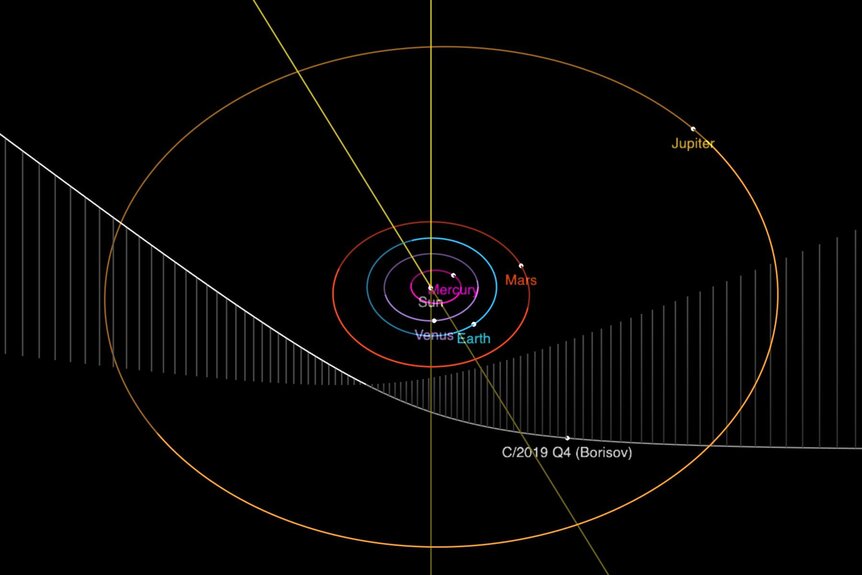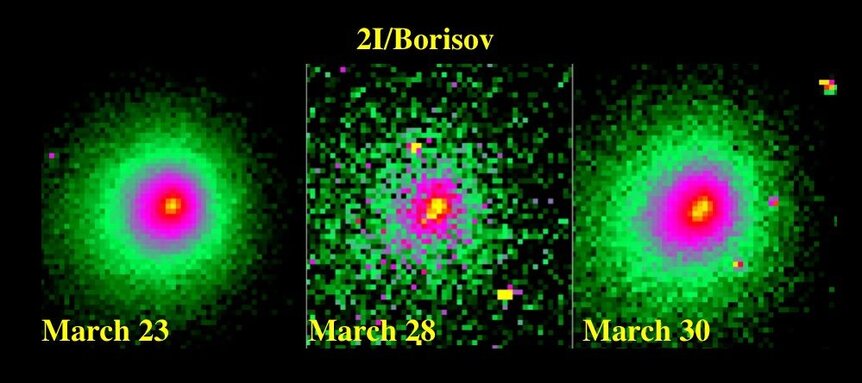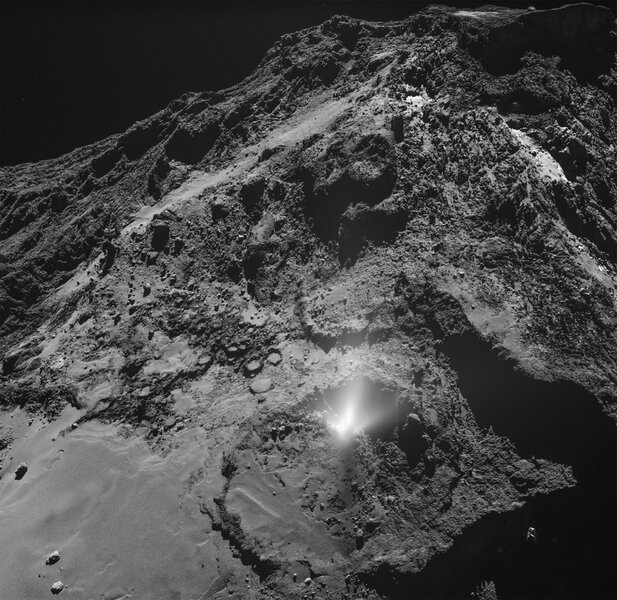Create a free profile to get unlimited access to exclusive videos, sweepstakes, and more!
An alien comet dropped something off on its way out of the solar system

What with everything going on in the world at the moment you might be forgiven if you’ve forgotten about something going on well outside it: A comet from another star is blasting through our cosmic neighborhood right now.
Discovered in 2019 by amateur astronomer Gennadiy Borisov, follow-up observations quickly showed that this comet was moving far, far too quickly to be bound gravitationally to the Sun. The most reasonable explanation is that it came from another star (though which one exactly is unclear), a true interstellar visitor.
The weird thing about the comet — called 2I/Borisov — is how weird it isn't: If it weren’t for its ridiculous velocity and trajectory, it would look just like any everyday comet from our own solar system. As it got close to the Sun the warmth heated the comet up, and the ice on and in it started to vaporize. Like locally sourced comets do, it emitted water, carbon monoxide, CN, and C2. Size estimates initially put it at a few kilometers across, but subsequent images show it’s a lot smaller, probably half a kilometer in diameter.
Everything about it looked… normal. Even in Hubble images taken on 23 March 2020, just a couple of weeks ago, everything looked copacetic.
But then images taken on 28 March showed something had changed during the intervening few days: The comet had split in two!
Those images from Hubble (displayed in non-natural colors) show the comet was in one piece on 23 March, but is clearly elongated by the 28th. The image on the 30th shows the same a little more clearly. Analysis shows that the elongation is caused by the comet splitting, and the two pieces separating slowly (probably about 0.3 meters per second, so slower than walking speed).
Is this an alien spaceship dropping off a shuttle as a prelude to invasion? Yeah, probably not*. In fact, if anything, this shows that this interstellar iceball really is just like our own solar system comets, because this sort of thing happens all the time.
It’s so common there’s a term for it: calving (like when a piece of a glacier splits off, which is appropriate, since comets have a high water ice content). Comets aren’t monolithically solid; instead they are riddled with deep cracks and fissures. Out in deep space this isn’t a big deal, but when one approaches a heat source like the Sun the light and warmth can reach down into these cracks, vaporizing the ice there. The vapor expands and leaves the comet surface through these vents. This was seen all over the comet 67P/Churyumov-Gerasimenko when the Rosetta spacecraft visited it.
Comets can be fairly fragile. Sometimes when they get too close to the Sun they completely disintegrate, like comet 332P/Ikeya-Murakami did in 2016 and 73P/Schwassmann-Wachmann 3 did in 2006. Lots of other examples abound. The nucleus (the solid part of the comet made up of rock and ices) falls apart, and the pieces separate at low velocity. Sometimes the comet disintegrates completely, and sometimes it just fragments. It looks like Borisov fragmented.
Interestingly, the first confirmed interstellar comet, ‘Oumuamua, was not seen to outgas (though many mysteries remain; its velocity changed as if some gas were leaking out, but none was detected). One speculation is that it had a hard shell of material around it caused by subatomic particles zipping around the galaxy chemically altering its surface. Obviously, nothing like this was the case for Borisov.
So, once again I am disappointed. I want this object to be, well, alien. Made of antimatter, or oozing green sticky stuff, or hiding some deeply buried ancient artifact. Instead, it’s remaining stubbornly mundane.
… for half a billion metric tons of rocks and ices spewing material into space as it screams through the solar system at over 170,000 kilometers per hour heading back out into the cold dark realm between the stars after having spent tens of thousands of years at least coming from we-don’t-know-where.
I mean, other than that.
*In the classic scifi novel “Footfall” by Larry Niven and Jerry Pournelle, an alien spacecraft from a planet orbiting Alpha Centauri heads into the solar system and, for strategic reasons, ejects the drive portion of their ship, which humans correctly reason means it’s coming here to stay. It’s a great novel and incredibly imaginative, if somewhat jingoistic at times and a tad self-congratulatory as well. Still, a classic for a reason.





























